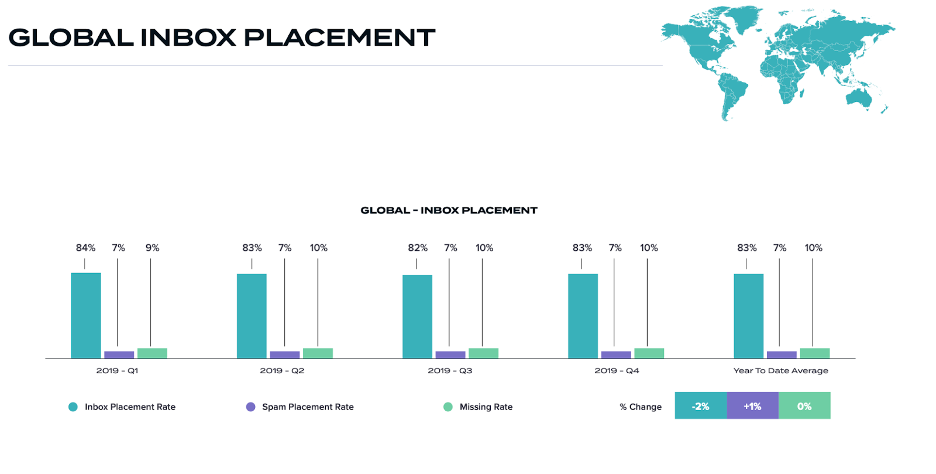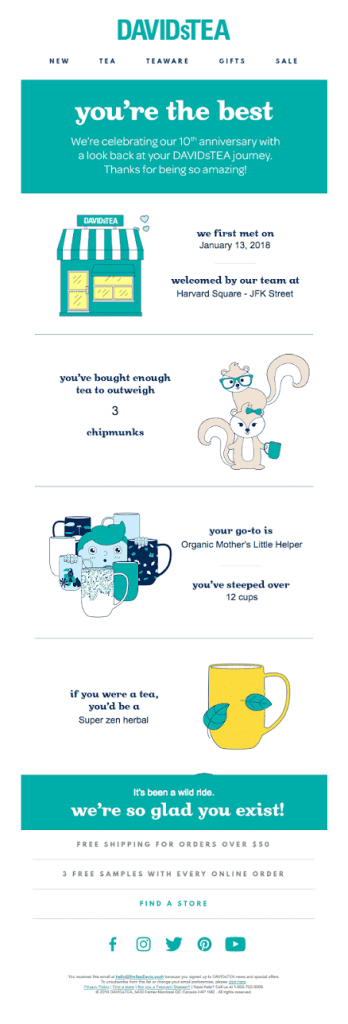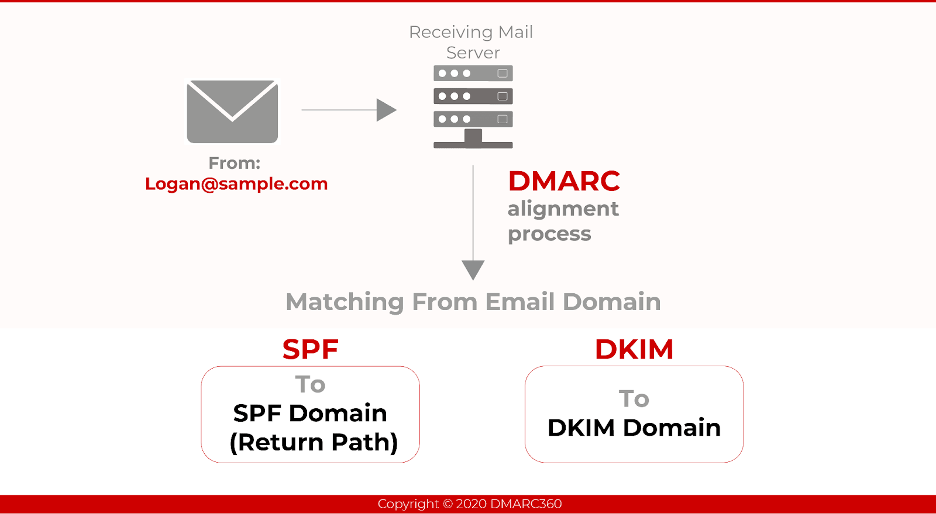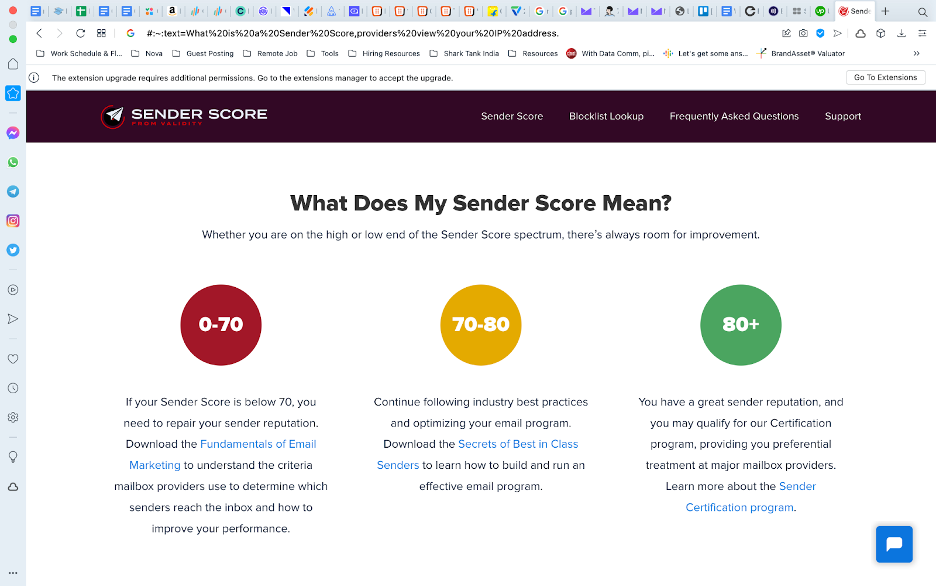Table of Contents
Marketing emails are still one of the most powerful tools for communication. However, nothing is more frustrating than creating the perfect marketing email, only to find it languishing in the recipient’s spam folder, unseen and unread.
Even legitimate emails can end up in the spam folder due to common mistakes, lack of email authentication, or the use of spammy words.
Understanding why emails are going to spam and learning how to prevent this can make the difference between successful communication and missed opportunities.
In this article, we’ll share the common reasons why your emails might be marked as spam and provide actionable tips to ensure they land in the inbox where they belong.
Let’s get started!
Digging the spam folder grave
Spam filters were designed to protect people from unsolicited or dangerous emails—cyberattacks, scamming tactics, and unsolicited offers.
They’re primarily a good cop… until your email marketing campaigns end up among spam messages or in the promotions tab, tucked away where your customers will never see them.

An Email Deliverability Benchmark Report states that one out of every six emails sent ends up in spam.

Image source: 2020 Deliverability Benchmark Report by Validity
Statistics and insights from other similar reports show that dealing with spam filters is a big concern for marketers. Because every message that ends up in the spam folder represents a lost opportunity.
But how can you practice email marketing and dodge the spam filters? The answer lies in improving your email deliverability and sender reputation score.
Why are my emails going to spam?
So, if you’ve ever found yourself asking, “Why are my emails going to spam?” it’s important to understand that several factors contribute to this, and addressing them is key to ensuring your messages reach their intended recipients.
Here are a few of the most critical elements to consider:
1. Demand for personalization
We’re living in the age of information overload. Social media feeds, advertisements, banner ads, paid promotions—anywhere a user goes, they’re bombarded with information. And that includes their inbox, too.
Nowadays, users love context and personalization in email marketing. If they don’t find anything useful, they’ll report spam emails and click the “unsubscribe link” without a second thought.
Many millennials and even boomers set custom spam filters and make their own spam rules within Gmail and other email clients.
Nobody likes to be sold to.
But…
Everyone likes to buy things. So, how do email marketers sell without selling?
By choosing a better way to reach out to the audience through personalized email marketing campaigns.

Image source: MyEmma
In the email above, DavidsTea announces its 10th anniversary via email with a creative, personalized approach.
They don’t simply list achievements, but rather talk about the user’s engagement with the brand and tea (user’s interest). Definitely not something that will be flagged by modern spam filters!
Personalization increases relevance, interest levels, and engagement among your audience. And industry data supports email personalization, too:
- Personalization increases open rates by 26%
- Personalization through segmentation leads to a 760% increase in email revenue
2. Increasing regulation
If you’re involved in email marketing, you probably know about the CAN-SPAM Act. Let’s quickly recap some basics about the CAN-SPAM Act.
The CAN-SPAM Act came into effect in 2003, setting standards for commercial and marketing emails. Guidelines included not using deceptive subject lines, including a physical address, prominently showing the unsubscribe link within the email, and honoring opt-out requests. Since its enforcement, the act has been the guiding light to avoiding spam filters.
But in 2018, a new kid entered the regulatory scene: GDPR. GDPR added new rules to the “email spam mix.”
The General Data Protection Regulation policies by the European Union laid the foundation for how companies handle personal information. This includes email addresses and IP addresses, too.
GDPR was enforced after public outcry about the need for privacy laws globally. Today, several countries have their own versions of privacy laws (CCPA, DCIA, PDPB, etc.) based on the principles of permission marketing.

Image source: Infographic Journal
Why should you care about these policies?
Because violating them can land you in some serious trouble. Fines can be up to €20 million, or 4% of your company’s annual turnover. Definitely not an amount you want to pay for rogue spam emails.
Laws and regulations like CCNA, GDPR, and others require marketers to think about their email strategy carefully if they want to beat spam filters moving forward.
4 tips to improve email deliverability in 2024
To help you stay ahead of the curve and ensure your future emails consistently reach the inbox, here are 4 essential tips to improve email deliverability.
1. Cement your technical foundation
In 2024, you can’t ignore the tech side of running an email campaign unless you want to be flagged as email spam.
Here are all the tech protocols you need to configure:
- Add an SPF record in your domain DNS: a Sending Policy Framework (SPF) tells email service providers and the receiving mail server that your email has come from an authorized IP. Before launching an email campaign, you should always check your SPF to avoid spam filters and land in the recipient’s inbox. Also, consider SPF flattening for a smoother mailing process.
- Use DKIM (Domain Keys Identified Mail): DKIM tells the email service provider that the content of the email hasn’t been compromised or altered between send and receive.
- Have a DMARC record: a Domain-based Message Authentication and Conformance record tells email service providers that emails are protected by SPF and DKIM.

Image source: DMARC360
These three components serve as email authentication receipts for your mail server. The parameters prove to an email service provider that you’re authorized to contact a recipient, improving the legitimacy of your campaigns. Failing to configure these is one big reason emails go to spam.
2. Go slow with new mailboxes
Imagine this: you have a chance to try out a brand-new SUV. What’s the first thing you do?
Pump the gas and take it on an adrenaline-filled joyride. Right?
The same thing happens with mailboxes. As soon as you get access to one, your hands are itching to launch your first campaign. But this can lead to accidents, just like your SUV experiment.
The best way to take up anything for a ride is to warm up the engine, whether we’re talking about an SUV or an email mailbox. Don’t bombard a new inbox with high-volume campaigns. It will be a red flag for the commercial mail receiving agency and mailbox providers that you should be blacklisted and sent to the spam box.
A reputable email service provider will keep a track record of mailbox activities (including volumes and spam reports).
Think of this record like a creditworthiness score, but for a mailbox. This “sender reputation score” has a big role in determining whether your emails go to the inbox or the subscriber’s spam folder.

Image source: SenderScore.org
Your sender reputation score will go down if you’re too desperate with outreach, if you keep sending emails to inactive email addresses, or if users register several spam complaints against you. These triggers alert the spam filters and send your emails directly into the spam folder.
The best approach is to warm up your audience/list and start out slow. Achieve a good sender score (minimum 70) with a small audience first and slowly pump up the gas. Remember not to use words that trigger spam filters or be pushy with your subject line if you want to improve your sender score and avoid going to spam.
3. Follow permission marketing principles
The term Permission Marketing was introduced by Seth Godin in his book by the same name. The book outlines some basic principles, emphasizing that brands should only reach out to people who have explicitly consented to receive marketing communications.
Simple, right?
Well, not to the millions of brands who are still exploring the idea of moving to permission-based marketing tactics.
After GDPR and privacy laws, adopting permission marketing tactics is no longer a luxury. If you think of it as one, you’ll often find your emails in spam. Here are some ways to start adopting permission marketing in your campaigns right away:
- Don’t hide your unsubscribe link or opt-out link (never make unsubscribing hard)
- Segment your audience (and only send contextual information)
- Use double opt-ins based on their preferences (Give your audience an option to opt-in or out of mailing lists)
- Always use a contextual, relevant subject line
- Don’t use spammy words unnecessarily inside your email content
- Add only one CTA per email (too many links confuse the receiver and send spam signals to the mailbox algorithms)
- Apply the 70/30 rule (70% educative emails and content and 30% promotional emails)
4. Avoid spam trigger words
What you write in the body of the email is the biggest signal to mailboxes. It will decide your fate—whether your email is important, or whether it should be dumped in the spam folder or promotions tab.
That’s why it’s so important to stay relevant and contextual, adding value to the recipient’s life or buyer’s journey.
While permission marketing principles help improve the content structure, here are some common mistakes you should avoid to stay out of the recipient’s spam folder.
- Using all caps in your subject line or using “spammy” subject lines
- Adding spam trigger words, or words that are too “salesy” (free, offer, special discount)
- Having non-personalized email marketing content
- Having too many grammatical errors inside email copy
- Excessively formatting your email content
- Adding large images or sending image-only emails that increase the size of the email
- Adding too many links (hyperlinks) within the text of the email
- Not adding (or hiding) your physical address and the unsubscribe link
Standard email deliverability best practices
Now that you have the answer to “why are my emails going to spam,” let’s take your learning up a notch. Start making notes on these best practices to dodge the spam folder in 2024:
1. Always use double opt-in
Double opt-in is now a standard practice (and feature) of all modern email campaigns. It involves adding an extra layer for your audience as they sign up for your email list. Here’s why you should have double opt-ins:
- It’s essential for complying with GDPR and other privacy laws
- It ensures email list hygiene
- It gives a positive deliverability signal to algorithms
2. Practice user segmentation
There’s nothing better than knowing your audience at a granular level if you want to avoid spam folders.
Segmenting users based on their interests, preferences, and expectations can do a lot to help you dodge spam folders (and promotions tabs) effectively. Here’s why you should start segmenting your audience:
- It makes personalized campaign creation easier
- It enhances the value you offer to your audience
- It nurtures your audience based on their stage in the buyer’s journey
3. Use behavioral emailing tactics
Sending targeted emails based on your audience’s actions is like earning brownie points when it comes to improving email deliverability.
You can use any modern email marketing software or marketing automation suite like Marketo or Encharge to set up behavior emails.
This will help you if your emails are going to spam, and it also helps you:
- Nurture inbound leads
- Ace the personalization game
- Improve your lead to conversion ratio and revenues
Final words
That’s it. Now you know exactly why emails go to spam and how to fix it.
Remember, you’re not a “Nigerian prince,” and you shouldn’t be sitting in your audience’s spam folder. You can easily beat spam filters with simple tactics and best practices.
The world (and the algorithms) appreciate consent. If you stay committed to permission marketing principles, you’ll never be flagged as a spammer. So, get to it and beat the spam monsters that haunt you with your next email marketing campaign!
About the author
Shaurya Jain is the blogger behind Attention Always, where he talks about online businesses, ultimate guides, software reviews, and how to make money online.
Migration has never been easier
We made switching a no-brainer with our free, white-glove onboarding service so you can get started in the blink of an eye.

What should you do next?
Thanks for reading till the end. Here are 4 ways we can help you grow your business:
Boost conversions with proven use cases
Explore our Use Case Library, filled with actionable personalization examples and step-by-step guides to unlock your website's full potential. Check out Use Case Library
Create a free OptiMonk account
Create a free OptiMonk account and easily get started with popups and conversion rate optimization. Get OptiMonk free
Get advice from a CRO expert
Schedule a personalized discovery call with one of our experts to explore how OptiMonk can help you grow your business. Book a demo
Join our weekly newsletter
Real CRO insights & marketing tips. No fluff. Straight to your inbox. Subscribe now
- Posted in
- Marketing
Partner with us
- © OptiMonk. All rights reserved!
- Terms of Use
- Privacy Policy
- Cookie Policy
Product updates: January Release 2025








